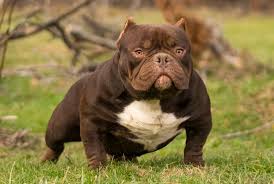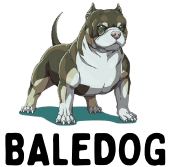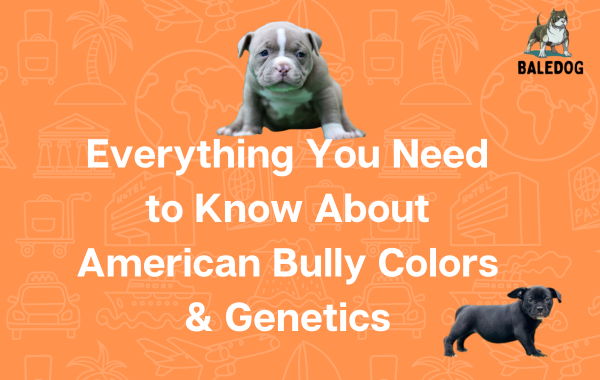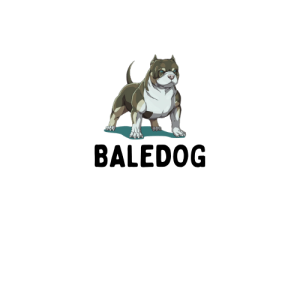If you’re an American Bully enthusiast, one thing you might’ve noticed is the variety of colors these dogs come in. But did you know that the coat colors and markings on an American Bully are all due to genetics? Yup, it’s all science! You might think it’s just about how cute or unique your dog looks, but there’s more to it than that.
Genetics play a huge role in not only the appearance of your American Bully but also in their health, temperament, and even the types of traits that can be passed down from their parents.

So, let’s dive into the world of American Bully colors and genetics, and break things down in a way that’s easy to understand. Whether you’re looking to buy a new pup or you’re just curious about the science behind those cool-colored coats, you’ll find something interesting here.
1. What Makes an American Bully Colorful?
First off, the American Bully is a breed known for its muscular build, loving personality, and – yes – those awesome colors. The coat colors you see on these dogs aren’t just random. They’re the result of specific genetic traits being passed down from their parents.
Dogs have two basic types of pigments in their fur: eumelanin (which is responsible for black, blue, and chocolate colors) and phaeomelanin (which creates colors like red, yellow, and tan). The way these pigments combine and express themselves results in the stunning colors we see in American Bullies.
2. The Basics of American Bully Color Genetics
Genetics can be a bit confusing, but let’s break it down simply.
Each dog has two sets of genes – one from their mom and one from their dad. These genes control how traits like coat color, texture, and even personality will appear in the offspring.
Dominant vs. Recessive Genes:
- Dominant Genes: These genes are more likely to show up in the dog’s appearance. So, if a dog has one dominant gene for a color, it will likely show that color.
- Recessive Genes: Recessive genes are trickier. They might be “hidden” in a dog’s DNA, but they can still show up in future generations if both parents carry them.
In simple terms: the mix of dominant and recessive genes determines what color your American Bully is going to have.
3. Common American Bully Colors
Now, let’s take a look at the actual colors you’ll find in American Bullies. These dogs are known for their variety of shades and patterns, so let’s break down the most popular colors:
a. Blue
The blue color is one of the most sought-after and trendy hues in the American Bully breed. It’s not actually “blue” but more of a grayish-blue tone. This color comes from a genetic mutation that dilutes the black pigment (eumelanin), giving the coat a blue-gray appearance.
- Genetic Make-up: Blue color is caused by a dilution gene, often referred to as the “d” gene. If a dog inherits this gene from both parents, it will have a blue coat.
- Health Consideration: Blue Bullies can sometimes face skin issues like allergies and sensitivity to sunlight because of the lack of pigment in their skin.
b. Black
The black American Bully has a deep, dark, glossy coat that many people love. It’s a classic color, but it’s important to note that black Bullies tend to show shedding more than some of the lighter-colored varieties.
- Genetic Make-up: Black is one of the most common colors and occurs when the dog has two copies of the dominant black gene (B).
- Health Consideration: Black Bullies are generally healthy but may suffer from the same issues any dog with a short coat might have, like dry skin.
c. Red
If you’re looking for a rich, deep reddish-brown color, you’re probably talking about the red American Bully. This color can range from a light rust to a deep mahogany.
- Genetic Make-up: The red coat results from a strong presence of the pheomelanin pigment. It’s considered a dominant color, so it will usually show up if one of the parents has the red gene.
- Health Consideration: Red Bullies tend to have healthy coats and skin but can be sensitive to allergies like any dog.
d. Chocolate
Chocolate-colored American Bullies have a warm, brown coat that is simply gorgeous. This color is rare and often highly desirable.
- Genetic Make-up: Chocolate is a recessive trait, so both parents need to carry the chocolate gene for the pups to have a chocolate-colored coat.
- Health Consideration: Like blue American Bullies, chocolate-colored dogs can also be prone to certain skin issues due to the dilution of pigment.
e. Fawn
Fawn is a yellow-brown color that is often lighter than red and darker than cream. It’s a beautiful, subtle shade, and you can often see it with darker ears and face masks.
- Genetic Make-up: The fawn color is usually the result of the ay gene, which creates a yellowish base. This color can be lighter or darker depending on the genetic combination.
- Health Consideration: Fawn-colored Bullies are generally healthy, but like all colors, they might be prone to some common breed-specific issues like hip dysplasia.
f. Tri-Color
The tri-color American Bully has three distinct coat colors, usually black, white, and tan (or other combinations). These dogs are pretty striking and are highly sought after for their bold look.
- Genetic Make-up: This coat color comes from a combination of genes that create patches of different colors. Tri-colored Bullies often carry the K gene, which allows for distinct color patterns, including tan points, white markings, and black or blue base colors.
- Health Consideration: Tri-colored Bullies are just as healthy as other colors but may be slightly more susceptible to some skin conditions because of the mix of coat textures.
4. Rare American Bully Colors and Markings
While the colors listed above are the most common, there are some rarer colors and markings that can occur in American Bullies, thanks to their genetic makeup.
a. Merle
Merle is one of the most striking patterns, with patches of diluted color mixed in with the base color. It can look blue, gray, or even red.
- Genetic Make-up: The merle pattern is caused by a specific merle gene (M), and it’s considered a dominant trait.
- Health Consideration: Merle dogs can be more prone to certain health issues, especially with their vision and hearing. The merle gene can sometimes cause problems when bred in pairs.
b. Lilac
The lilac American Bully is one of the rarest and most expensive colors you’ll find. It’s a pale, muted version of the blue color but with a pinkish tint.
- Genetic Make-up: Lilac is a mix of blue and chocolate genes and is the result of a dilution in both eumelanin and pheomelanin.
- Health Consideration: Lilac Bullies may have the same health issues as blue and chocolate Bullies, including skin sensitivities.
5. Markings and Patterns
Apart from the base colors, American Bullies can also have different markings that make their appearance unique.
- Brindle: This pattern looks like tiger stripes, where darker lines appear over a lighter coat.
- Sable: Sable Bullies have a mix of lighter and darker shades within their coat, which gives it a multi-dimensional look.
- White Markings: Some American Bullies have white markings on their chest, paws, or face. This can create a really cute contrast to their primary color.
6. The Influence of Genetics in American Bully Colors
The colors and patterns we see in American Bullies are due to the intricate way that genes are passed from one generation to the next. Two parents with different colors can give birth to puppies that have a range of color combinations, and sometimes, even surprising new traits. It’s all about how the dominant and recessive genes mix.
Final Thoughts:
Whether you’re a breeder or just someone looking to bring an American Bully into your home, understanding their colors and genetics adds a whole new layer of appreciation for this incredible breed. The variety of colors, from the deep blue to the striking tri-color, showcases how diverse and unique each dog can be. So, when you see that gorgeous American Bully, remember it’s not just about how they look—it’s the science of genetics that makes them shine!


